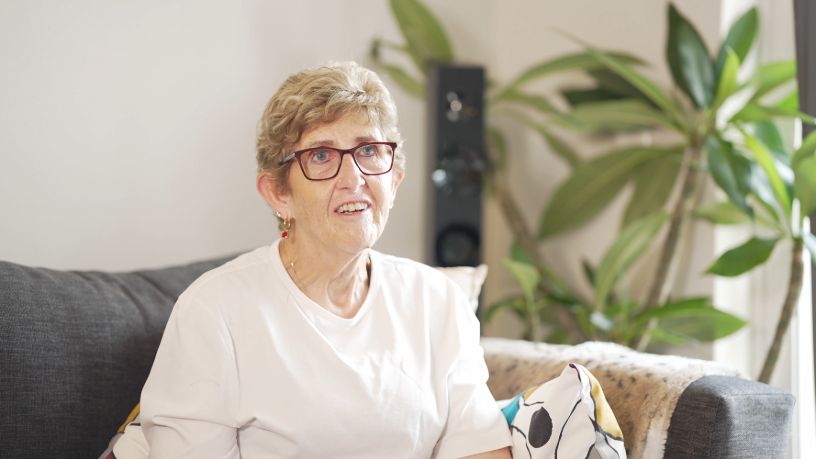Cancer is a leading cause of death in Australia, but treatment is often successful.
Key takeaways
Surgery, chemotherapy and radiation therapy are the most common cancer treatments.
The range of cancer treatments available in Australia is broad, further including immunotherapy, hormonal therapy and targeted therapies.
If you're living with cancer, you may need treatment. Your doctor will discuss the right treatment options, including their effectiveness and side effects.
Here, we look at the most common cancer treatments in Australia, plus some of the pros and cons of undergoing each.
Most common treatments
Surgery
If you have a cancer tumour, your doctor may recommend physically removing it.
There are a wide range of cancer surgeries. Some procedures are complex, with potential risks and long recovery times, while others are as simple as removing the cancer during a biopsy (as sometimes happens with skin cancer).
Sometimes, surgery may be required to investigate the size of a tumour, and whether the cancer has spread to other parts of your body. Surgery may be recommended alongside another treatment, like chemotherapy.1
Open surgery involves making an open cut in the body to remove cancerous tissue or an entire part of your body. For example, breast cancer surgery typically involves a lumpectomy or a mastectomy for breast tumour treatment.
A lumpectomy removes the cancerous tumour and surrounding tissue from the breast, while a mastectomy procedure involves removing the entire breast (or both breasts, in the case of a double mastectomy).
Side effects of a mastectomy include fatigue and numbness, and recovery can take several weeks. You may also undergo breast reconstruction surgery following the procedure. The procedure will leave a mastectomy scar, which may fade over time.2
Other common cancer surgeries include:
- Prostate cancer: Prostate cancer treatment often involves a procedure to remove the prostate gland, known as a prostatectomy.
- Skin cancer: Cancerous spots on your skin are typically cut out. Melanoma treatment may require further surgery to remove surrounding tissue.
- Bowel cancer: For early bowel cancer, a colectomy may be required to remove part of or the entire bowel.
- Lung cancer: Early stage non-small cell lung cancer may require one of 3 surgeries to remove a lobe (lobectomy), portion of a lobe (wedge resection) or entire lung (pneumonectomy).
- Cervical cancer: Cervical cancer treatment may require surgery to remove the tumour or, for some people, their entire uterus (hysterectomy).
As well as open surgery, cancer may be removed using a method like keyhole surgery, robotic surgery, laser surgery or cryosurgery (freezing off tissue).
Chemotherapy
Chemotherapy (or 'chemo') refers to a variety of drugs that are used to kill cancer cells.
Chemo may be used by itself to treat cancer or alongside other treatments, such as surgery or radiation therapy. It may also be used before another treatment (neoadjuvant chemotherapy) to reduce the size of a tumour or following another treatment (adjuvant chemotherapy) to kill off any hidden cancer cells. It can also be used in a palliative context to reduce cancer symptoms.3
There are a wide variety of chemo drugs available. They typically come in the form of a pill, needle injection, intravenous infusion or topical cream. You may be required to undergo chemotherapy in a hospital or outpatient centre, however some chemotherapy medication (like oral chemotherapy) can be taken at home.
The duration of chemotherapy will come down to your specific cancer. It typically lasts between 3 and 6 months.4
Unfortunately, chemo comes with a range of potential risks and side effects. While different chemo drugs affect people in different ways, some common side effects include:
- vomiting
- nausea
- diarrhoea or constipation
- anaemia and fatigue
- an increased risk of infection
- ulcers or mouth sores
- hair loss
- changes to your nails
- bruising
- weakened muscles
- dry eyes.4
Chemo can also affect your appetite, leading to weight loss, and may cause thinking and memory problems often referred to as 'chemo brain'.
Longer-term risks of chemotherapy may include:
- infertility
- lung damage
- heart or kidney problems
- nerve damage
- the risk of developing another cancer.3
Radiation therapy
Also known as radiotherapy, radiation therapy uses high doses of radiation (such as X-rays) to injure or destroy cancer cells, or reduce the size of a cancerous tumour.
The therapy can be used on its own to treat cancer, or it may be used alongside other treatments. It might be used before or after cancer surgery to make the treatment more effective by shrinking cancer cells or stopping the growth of any remaining cancer cells. It may also be used with chemotherapy.
Radiation is typically delivered in one of 2 ways:
- Externally: Known as external beam radiation therapy (EBRT), radiation is delivered via an external beam that's pointed at the cancer area.
- Internally: Known as brachytherapy, thin radioactive tubes are placed inside your body, close to the cancer.
Treatments are usually performed inside a hospital or clinical setting. The length of your treatment will be based on your cancer and health, and can range from one session to a number of sessions over several weeks. In some cases of brachytherapy, the implants may be left inside you permanently.
As with other cancer treatments, radiation therapy comes with potential temporary side effects. These can include:
- fatigue
- nausea
- appetite loss
- skin issues including redness, dryness and blistering
- hair loss
- problems with digestion
- a dry or sore throat or mouth
- coughing or shortness of breath.5
If it's administered close to your reproductive organs, radiation therapy may also affect your fertility.
As with any major medical treatment, it's important to discuss the pros and cons of radiation therapy before committing to it.
Other treatments
Immunotherapy
Also known as biological therapy, immunotherapy uses your body’s immune system to treat an illness (such as cancer).
Essentially, the treatment attempts to boost your immune system to help it attack cancer cells, hopefully slowing or stopping them.6
Immunotherapy treatment is administered in the form of pills, topical creams, intravenous infusions or intravesically (directly into your bladder). Side effects may include fatigue, abdominal issues, skin issues and diarrhoea.
In Australia, immunotherapy is sometimes used to treat:
- head and neck cancers
- bladder cancer
- kidney cancer
- skin cancer (melanoma treatment)
- leukaemia
- liver cancer
- lung cancer
- lymphoma.7
Hormonal therapy
Also known as endocrine therapy or hormone-blocking therapy, hormonal therapy treats cancers that develop as a result of hormone issues in your body (hormone-dependent cancers). These include:
- breast cancer (which may relate to oestrogen or progesterone)
- uterine (endometrial) cancer (which may relate to oestrogen)
- prostate cancer (which may relate to testosterone).8
Hormonal therapy tablets or injections are typically used alongside other cancer treatments. The treatment may be used before surgery or radiation therapy to help reduce the size of a tumour, or after another treatment to lower your risk of relapse.
Side effects of hormonal therapy can include fatigue, changes in mood, hot flushes, sweating and weight gain.8
Targeted therapies
Also called molecular targeted therapy or biological therapies, targeted therapies use medications that are aimed at a specific part of a cancer cell (such as inside or on the surface of it).
By blocking the cancer cells, the hope is that targeted therapies will slow down or even kill the cancer cells.
As targeted therapies can reduce cancer symptoms, they're sometimes taken on a long-term basis. The medication is usually taken as a pill, intravenously or as an injection. The therapy may be used alongside chemotherapy.
Side effects of targeted therapies may include:
- skin irritation
- eye issues
- fatigue
- headaches
- nausea
- fever
- achy joints
- elevated blood pressure
- diarrhoea.9
Your treating team will tailor a plan for you, which may involve more than one therapy.
In addition to your treatment, you might like to explore complementary therapies like massage to help manage the side effects of your cancer treatment and improve your quality of life.

At Bupa, trust is everything
Our health and wellbeing information is regularly reviewed and maintained by a team of healthcare experts, to ensure its relevancy and accuracy. Everyone's health journey is unique and health outcomes vary from person to person.
This content is not a replacement for personalised and specific medical, healthcare, or other professional advice. If you have concerns about your health, see your doctor or other health professional.
1Cancer Council. (2024). Surgery. Cancer Council.
2Cancer Council. (2024). Mastectomy. Cancer Council.
3Mayo Clinic. (2024). Chemotherapy. Mayo Clinic.
4Cancer Council. (2024). Chemotherapy. Cancer Council.
5Cancer Council. (2024). Radiation therapy. Cancer Council.
6Cancer Australia. (2023). Immunotherapy. Australian Government.
7Cancer Council. (2024). Immunotherapy. Cancer Council.
8Cancer Council. (2024). Hormone therapy. Cancer Council.
9Cancer Council. (2024). Targeted therapy. Cancer Council.
You might also like...
Exercise helped me survive cancer
Michelle was diagnosed with cancer at 60. Find out how sticking to a personalised exercise routine helped during her treatment.
Emily’s story: From cancer survivor to entrepreneur and mother
Emily kicked cancer 3 times. Through her experience, she was inspired to start a business and was given an unexpected miracle. Read about her journey.
Skin cancer: Understanding the main types
Skin cancer is the third most common cancer in Australia, but it can be treated if caught early on. Learn about the main types, plus how you can stay safe in the sun.
Different types of breast cancer
Breast cancer can be invasive or non-invasive, and is also classified by its subtype and stage. Find out about the different types, stages and treatments.





